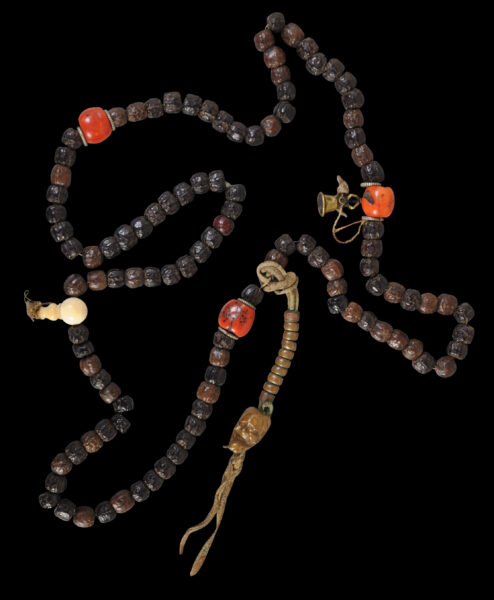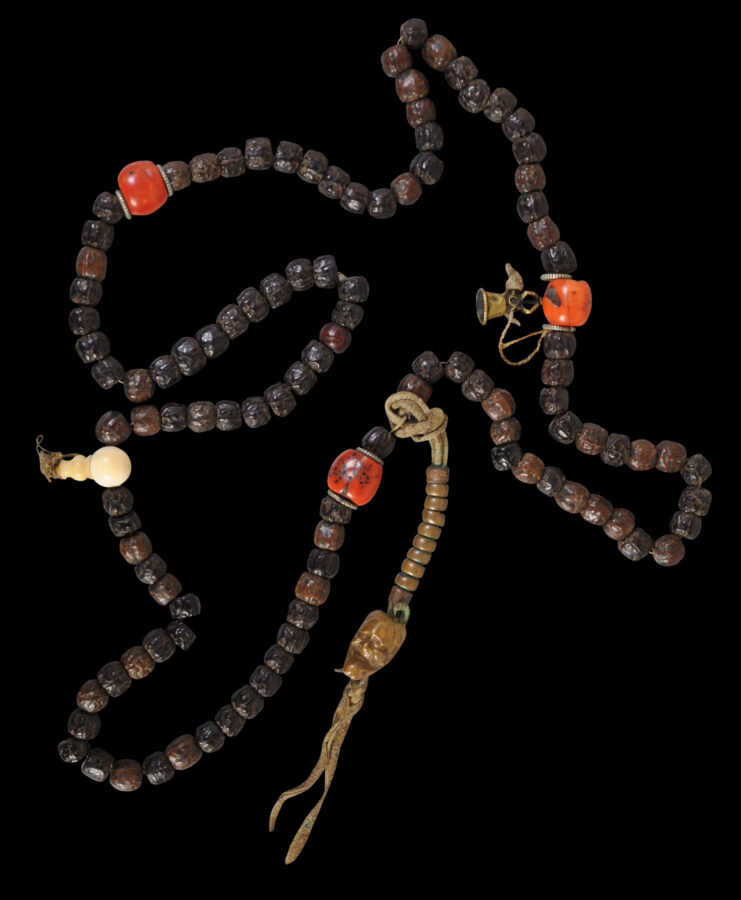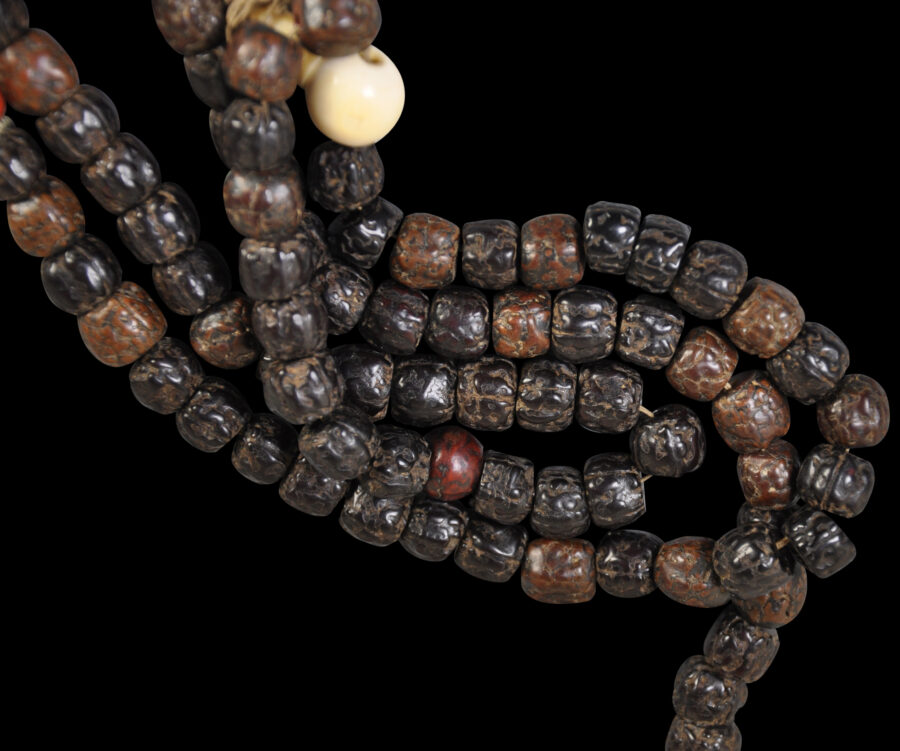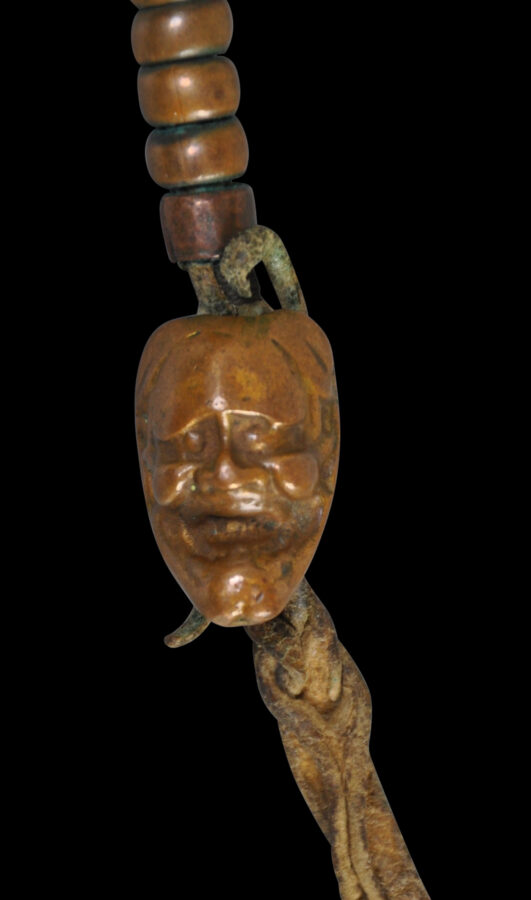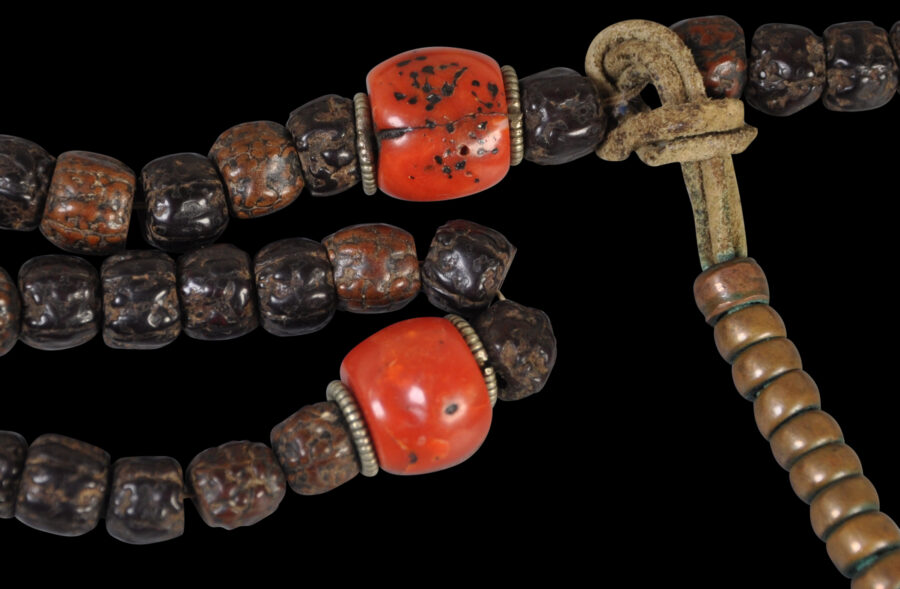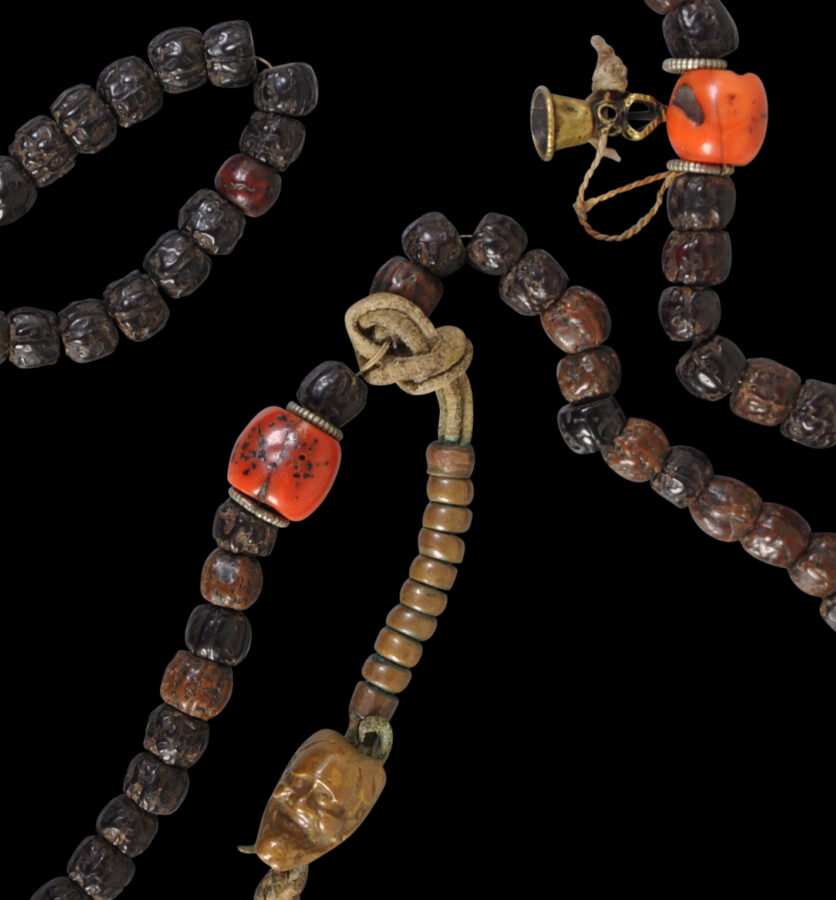This fine Tibetan Buddhist rosary (sin-‘phen) or mala is unusual because it is made from rudrakhsa seeds in the manner of a Hindu Indian rosary. The rosary has had so much ritual use, that the knobbly, rough surface of each seeds has been worn smooth from endless handling. Each seed has splendid wear and patina.
Also included are three large natural coral beads, a chank shell counter, a brass bell-like tokcha, and string of ten brass counters threaded on a leather strap and unusually, with a well-worn Japanese ojimie brass demon (oni) face bead. The inclusion of the Japanese component highlights the eclectic nature of Tibetan Buddhism and its regard for talismans – the more unusual and ‘unexplained’ their source, then the more magical they often were deemed to be.
Buddhist rosaries evolved from ancient Hindu-Indian mala prayer beads. In Tibet, they were used by both laymen and monks. They are supposed to comprise 108 beads plus others as counters, although sectarian variants might have as many as 111 beads plus counters, and others as few as 100. The main prayer beads were used to count repetitions of prayers and the counters were used to record multiples of the main beads, so that thousands of repetitions could be counted. They are the main item a Tibetan practicing Buddhist would own. Usually, they were held in the left hand whilst being used.
Rudraksha seeds (Elaeocarpus ganitrus) are used as prayer beads typically among Hindus and Sikhs in India and Nepal. They grow in India and Nepal. Much less typically, they were used in Tibet (having been imported from India and Nepal) to be used in Buddhist malas or rosaries. Among Hindus, the seeds are associated with Shiva and typically are worn for their talismanic, protective value, and used for ritual chanting. The seeds have up to fourteen ‘faces’ or locules – naturally ingrained longitudinal lines which divide the seed into segments. For Hindus, each ‘face’ represents a deity.
The set here is in an excellent, stable condition.
It has come from an old, private London collection acquired over decades.
References
Reynolds, V., Tibet: A Lost World: The Newark Museum Collection of Tibetan Art and Ethnology, The American Federation of Arts, 1978.
Sherr Dubin, L., The Worldwide History of Beads, Thames & Hudson, 2009.
Untracht, O., Traditional Jewelry of India, Thames & Hudson, 1997.


